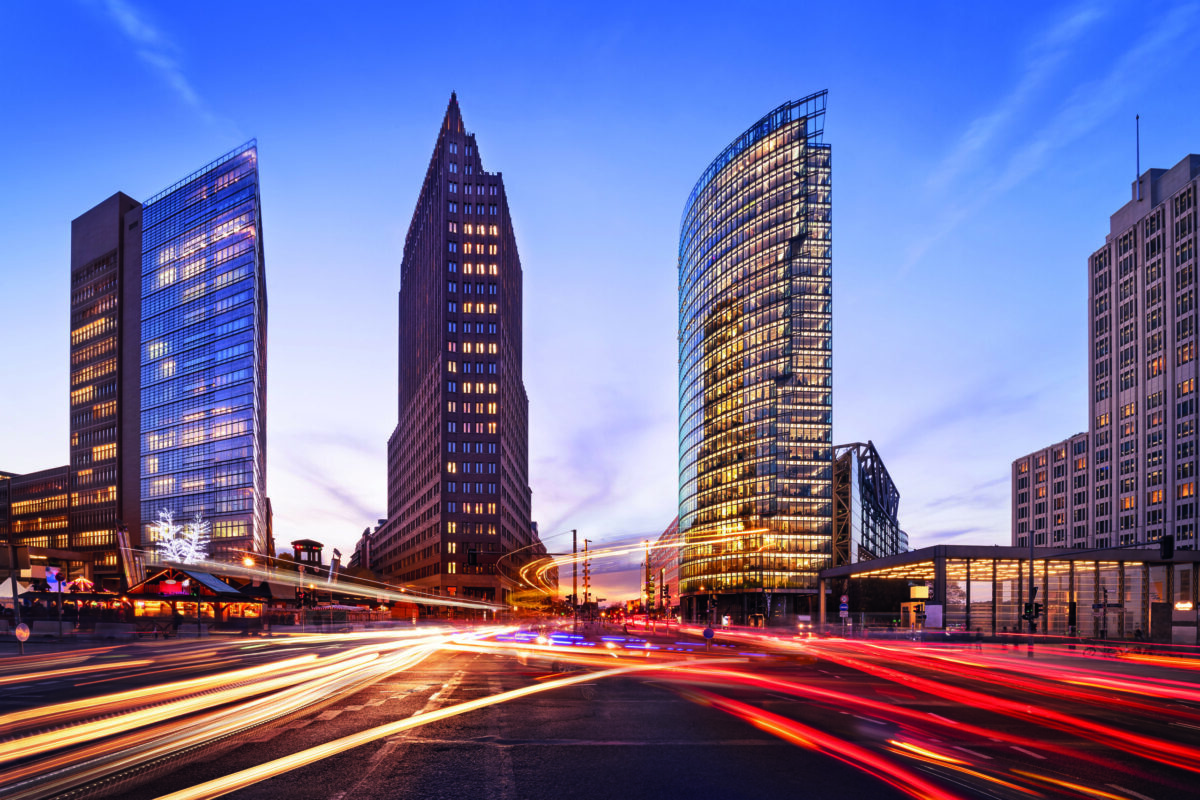Economists expect the German economy to rebound strongly later this year once coronavirus restrictions are lifted and supply bottlenecks ease

The German economy shrank as much as 1 per cent in the final three months of last year, as the latest coronavirus restrictions and supply chain bottlenecks kept output below pre-pandemic levels. The Federal Statistical Office on Friday published initial estimates showing Europe’s largest economy managed growth of 2.7 per cent last year, despite fourth-quarter output falling between 0.5 and 1 per cent from the previous quarter.
The figures mark a rebound from 2020, when German gross domestic product shrank 4.6 per cent in a record postwar recession caused by the Covid-19 crisis. But the country is lagging behind other big economies, including the US, France and UK, which have rebounded above pre-pandemic levels of output. Economists expect the German economy to rebound strongly later this year once coronavirus restrictions are lifted and supply bottlenecks ease. But they worry that if the problems persist, the country could slide into recession — defined as two consecutive quarters of falling GDP.
The Bundesbank last month cut its German growth forecasts but said it still expected the economy to rebound above pre-pandemic levels of GDP in the coming months with growth of 4.2 per cent in 2022, boosted by a “boom in private consumption”, as well as higher exports and business investment.
The German economy grew by 2.7% in 2021 after another year of surging Covid-19 cases, pandemic-related restrictions and supply chain pressures. The statistics office said that German growth was still 2% lower in 2021 than in 2019, showing that the economy has not yet returned to pre-Covid levels. In the second half of 2021, signs emerged that the German economy could be hit by supply chains issues. In October, the country’s leading research institutes slashed their forecasts for growth in 2021 to 2.4%. The German government also lowered its expectations for annual growth in 2021. Looking ahead, upcoming economic performance remains clouded by uncertainty.
Germany increased net new borrowing to a record 215 billion euros ($245.87 billion) last year following an unprecedented sum of 130 billion euros in 2020 to fund the fight against COVID
Germany increased net new borrowing to a record 215 billion euros ($245.87 billion) last year following an unprecedented sum of 130 billion euros in 2020 to fund the fight against COVID. The public sector deficit of all state levels rose to 153.9 billion euros or 4.3% of economic output. The economy ministry said in its monthly report that ongoing supply bottlenecks for important primary products in manufacturing were likely to persist for a while.
The price-adjusted gross value added in manufacturing rose markedly by 4.4% year on year. Notable increases were recorded also for most of the service sector compared with 2020. The economic performance in the field of business services, which include research and development as well as legal, tax consultancy and engineering activities, was up by 5.4%. At 3.0%, economic growth was somewhat lower in the aggregated economic sector of trade, transport, accommodation and food services due to the continuing pandemic restrictions. Compared with 2020, the economic performance was down slightly only in construction (-0.4%), which had not been visibly affected by the Covid-19 pandemic in 2020.
Despite the increases of 2021, economic performance has not yet reached pre-crisis levels in most economic sectors. Economic performance in manufacturing, for instance, was still 6.0% below the level of 2019 in 2021. Other services, which include creative activities in addition to sports, culture and entertainment, were hit particularly hard by the continuing Covid-19 pandemic. Here the price-adjusted value added was even 9.9% below the pre-crisis level in 2021. The decline in economic performance recorded in the crisis year of 2020 for public services, education, health was almost compensated for in 2021. Construction as well as information and communication were able to sustain their positions during the pandemic and considerably increase their economic performance compared with 2019.
Gross fixed capital formation in construction grew by only 0.5% in 2021 due to labour and material shortages after having risen more strongly for five consecutive years. Gross fixed capital formation in machinery and equipment increased a price-adjusted 3.2% in 2021 but had in fact decreased sharply in the crisis year of 2020.
In 2021, foreign trade recovered from the strong decreases of the previous year. German exports of goods and services were up a price-adjusted 9.4% on 2020. Imports increased by a price-adjusted 8.6% in the same period. In 2021, Germany’s trade with foreign countries was thus only slightly below the level of 2019.
Employment gains were recorded for public services, education, health (+2.2%), information and communication (+2.4%) and construction (+1.2%). In contrast, employment losses were observed for trade, transport, accommodation and food services as in the year before (-1.8%). The number of marginally employed people and self-employed continued to fall, while more persons in employment were subject to social insurance contributions.
